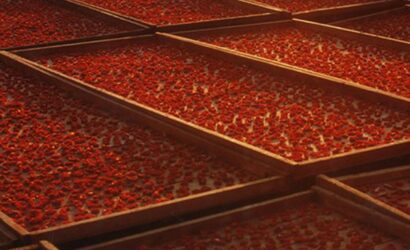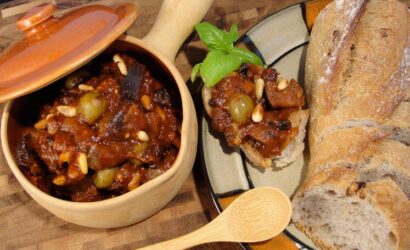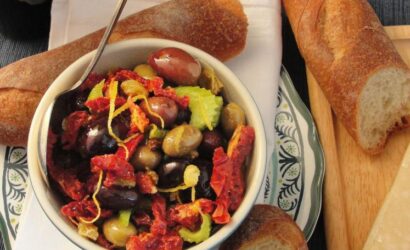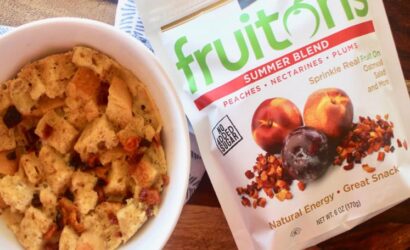The Porch Life
This is where it all comes together, where hard work and patience earn their reward. At Traina, we’ve always believed in the slower-is-better lifestyle. Maybe that’s because we work with Sun Dried Fruit, a product that can’t be hurried.But it also makes sense in the lives we lead.
We call it The Porch Life, inspired by the front porch of the original Traina Ranch seen in our logo. For the better part of a century, it’s remained a place where family and friends gather to share stories, food, and wisdom. Pull up a chair and join us.
 CategoriesBlog Desserts & Baked Goods Recipes
CategoriesBlog Desserts & Baked Goods Recipes Fall Recipes Featuring Traina® Foods Sun Dried Tomatoes
With fall weather evoking cozying up by the fire and eating warm hearty meals, Traina® Foods shares some of their family-favorite…
Bread Pudding With fruitons® Summer Dried Fruit Blend
by College GnawLedgeTM PREP TIME10 mins COOK TIME10 mins SERVINGS1 mins Share on facebook Share on whatsapp Share on email…
 CategoriesAppetizers & Snacks Blog Recipes
CategoriesAppetizers & Snacks Blog Recipes Eggplant Relish with Sun Dried Tomatoes & Golden Raisins
A classic southern Italian flavor combination is eggplant and tomatoes with golden raisins added in to heighten the sweetness of…
 CategoriesAppetizers & Snacks Blog Recipes
CategoriesAppetizers & Snacks Blog Recipes Baked Ricotta With Sun Dried Tomatoes
Here’s an easy appetizer recipe that lends itself to creative versions: add different herbs; add feta cheese and lemon zest;…
 CategoriesAppetizers & Snacks Blog Recipes
CategoriesAppetizers & Snacks Blog Recipes Sun Dried Tomatoes With Olives and Raisins
PREP TIME15 mins COOK TIME20 mins SERVINGS8 Share on facebook Share on whatsapp Share on email Share on print Preparation…
 CategoriesAppetizers & Snacks Blog Recipes
CategoriesAppetizers & Snacks Blog Recipes Recipe Ideas for an Appetizer Party
There’s never a need for an occasion to get together with friends and family. Instead of hosting a big bash…
 CategoriesAppetizers & Snacks Blog Recipes
CategoriesAppetizers & Snacks Blog Recipes Sun Dried Tomato Tabbouleh Appetizer
An easy appetizer recipe that takes only minutes to make, is vegan and delicious! PREP TIME 10 mins COOK TIME…
 CategoriesAppetizers & Snacks Blog Recipes
CategoriesAppetizers & Snacks Blog Recipes Ceviche with Dried Fruit
PREP TIME 30 mins COOK TIME 1 hr SERVINGS 4 Share on facebook Share on whatsapp Share on email Preparation…
 CategoriesAppetizers & Snacks Blog Recipes
CategoriesAppetizers & Snacks Blog Recipes Crostini with California Sun Dried Tomato
PREP TIME 10 mins COOK TIME 30 mins SERVINGS 18 Share on facebook Share on whatsapp Share on email Preparation…
 CategoriesAppetizers & Snacks Blog Recipes
CategoriesAppetizers & Snacks Blog Recipes California Sun Dried Ruby Royal Apricots and Goat Cheese Appetizer
PREP TIME 30 mins COOK TIME 30 mins SERVINGS 4 Share on facebook Share on whatsapp Share on email Preparation…

